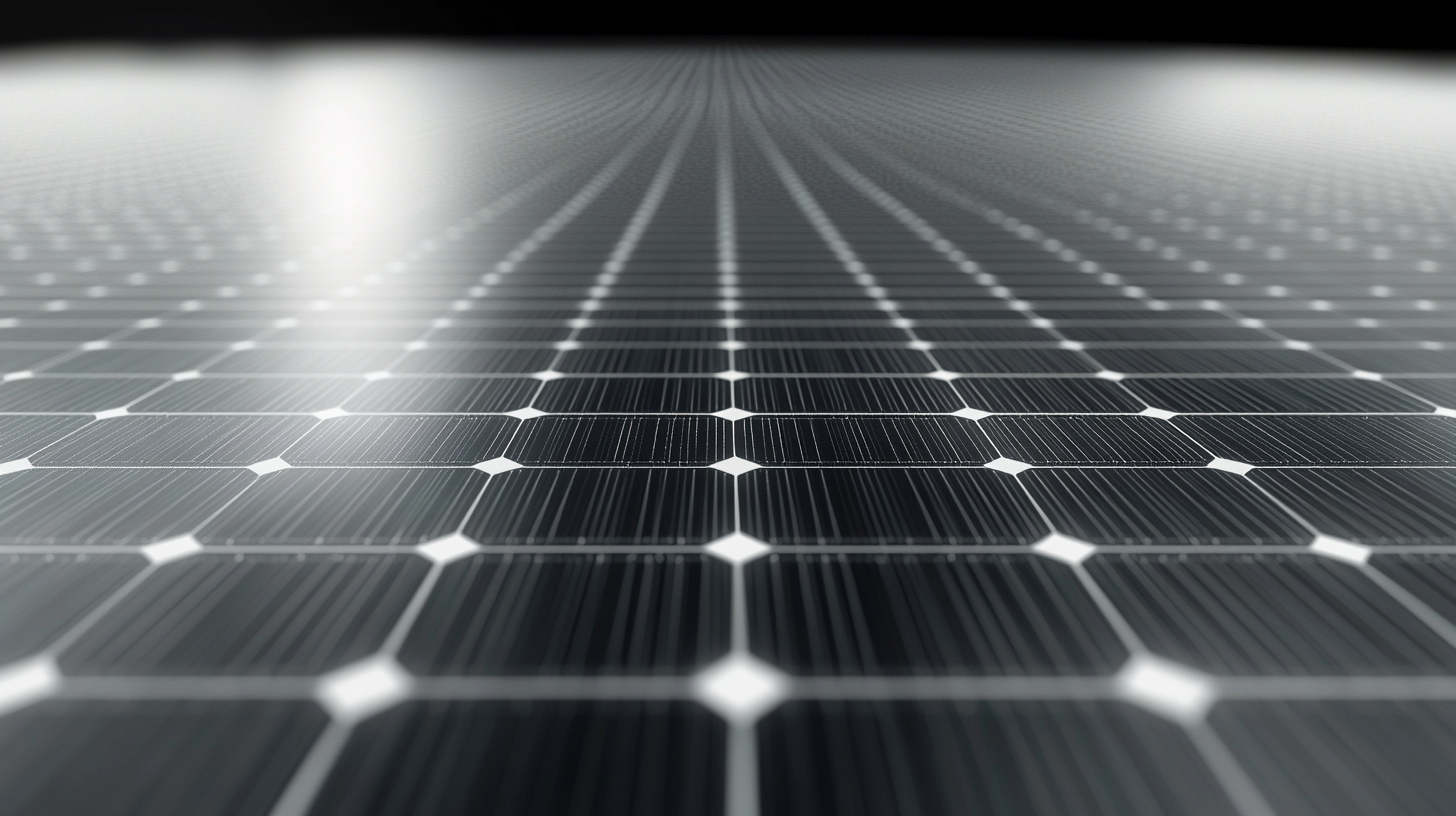Blog
- Home
- Blog
Chinese Solar Panel Market Thrives Despite US China Tariffs on Best Solar Products
The Chinese solar panel market continues to demonstrate robust growth even in the face of imposed tariffs between the United States and China. According to recent reports from the Solar Energy Industries Association, the global solar market saw an increase of 23% in new installations in 2022, with China accounting for nearly 60% of the total global solar panel production. This trend highlights China's resilience in the renewable energy sector despite ongoing trade tensions. The International Energy Agency also predicts that solar power will become the dominant source of electricity generation by 2025, further underscoring China's pivotal role in this transformation. As domestic innovation and competitive pricing thrive, Chinese manufacturers are strategically navigating regulatory challenges, allowing them to maintain their leadership in the solar panel industry. This blog delves into the factors contributing to this growth and the implications for the global solar market.

Growth of Chinese Solar Manufacturing Amidst Tariff Challenges
The Chinese solar manufacturing sector has demonstrated remarkable resilience in the face of ongoing U.S.-China tariffs. Despite these challenges, the industry continues to thrive, largely due to a surge in domestic and international demand. According to a report by the International Energy Agency (IEA), global solar photovoltaic (PV) capacity reached over 800 GW in 2020, with China accounting for more than 35% of that total. This significant share highlights the pivotal role that Chinese manufacturers play in the global solar supply chain.
In 2022, Chinese solar panel exports increased by 25%, even amid tariff pressures. Major companies like LONGi Green Energy and JinkoSolar reported substantial revenue growth, illustrating the effectiveness of their strategic investments in technology and production efficiency. A report by Wood Mackenzie forecasts that China's share of the global solar panel market will rise to 70% by 2025, driven by innovations and cost reductions. This trend underscores how Chinese manufacturers are not only navigating tariff challenges but are also positioning themselves as leaders in the renewable energy transition, maximizing opportunities to cater to an increasingly eco-conscious global market.
Impact of US-China Tariffs on Solar Industry Dynamics
The landscape of the solar panel market in China continues to thrive despite the persistent tariffs imposed by the U.S. on Chinese solar products. These tariffs, initially implemented to protect domestic manufacturing, have led to a significant reshaping of the solar industry dynamics. Manufacturers in China have not only adapted to these challenges but have also leveraged them as incentives to innovate and improve efficiencies in production. This resilience is evident as industry reports highlight a growing demand for solar technology, positioning China as a leader in renewable energy development.
Furthermore, the broader implications of U.S.-China trade tensions extend beyond tariffs on solar products. Policies introduced during the Trump administration have reshaped multiple sectors, fostering uncertainty in global supply chains. As Chinese investments increasingly flow into alternative markets like Mexico, this fragmentation of the manufacturing landscape may provide unexpected opportunities for growth. In the face of geopolitical tensions, understanding the shifting dynamics of the solar industry and related sectors is crucial for stakeholders looking to navigate this complex environment.
Impact of US-China Tariffs on Solar Industry Dynamics
Strategies Employed by Chinese Manufacturers to Stay Competitive
Despite challenges posed by U.S. tariffs, the Chinese solar panel market continues to flourish through innovative strategies and a focus on digital transformation. Chinese manufacturers are leveraging advancements in robotics and automation to enhance productivity within their factories. The surge in the adoption of industrial robots has enabled these firms to streamline operations and reduce production costs, which is critical when competing against global players facing trade restrictions. According to recent industry analyses, China has become a world leader in this area, significantly outpacing its rivals in the commercialization of robotic technology.
Furthermore, competitive strategies among Chinese solar manufacturers have emphasized innovation and digital integration. Studies show that digital transformation directly correlates with increased innovation, facilitating firms to adapt swiftly to market changes and consumer demands. Additionally, with over 10,000 'little giant' companies already established, China is effectively cultivating a robust ecosystem that encourages technological advancement and collaboration among smaller players. This approach not only strengthens their foothold in the solar panel sector but also positions them as key contributors to the global green energy transition.

The Future of Global Solar Energy Markets in a Tariff Environment
The global solar energy market is at a critical juncture, navigating the complexities imposed by tariffs, particularly from the U.S. on Chinese solar products. Despite a staggering 30.5% decline in Chinese solar panel exports in Q1 2025, emerging markets are showing resilience rather than retreat. This shift suggests a structural transformation in demand, driven by an urgent need for renewable energy solutions amidst climatic challenges. Countries like Indonesia are ramping up their imports of Chinese solar components, capitalizing on China's manufacturing prowess while fostering local development.
**Tips:** To thrive in this tariff-laden environment, stakeholders should invest in market intelligence to understand regional demands. Furthermore, diversifying supply chains and looking into new markets can mitigate risks associated with high tariffs.
As geopolitical dynamics shift, reports indicate that the U.S. tariffs may not be as crippling for China's green technology sector. Industry experts argue that the impact on clean energy technology remains minimal compared to other sectors. Consequently, the future of solar energy might hinge on strategic collaborations and innovative adaptations, ensuring that the global push for sustainability continues unabated despite the tariff challenges.
**Tips:** Companies should consider forming strategic alliances with local distributors in emerging markets to enhance their foothold, thus turning challenges into opportunities within this evolving landscape.

Emerging Trends in Chinese Solar Technology and Innovation
The Chinese solar panel market continues to flourish, showcasing unprecedented resilience even amidst the prevailing US-China tariffs on solar products. As of 2022, China's solar power generation capacity reached 392 gigawatts, accounting for over 40% of the global total, according to the National Energy Administration (NEA). This surge highlights not just a robust manufacturing base but also a commitment to innovation in solar technology.
Emerging trends in Chinese solar technology reveal a shift towards higher efficiency and lower production costs. For instance, the integration of bifacial solar panels has seen significant adoption, offering up to 20% more energy output when harnessing sunlight from both sides. Reports from the International Energy Agency (IEA) predict that by 2025, China will lead in next-generation solar technology developments, including perovskite cells and energy storage solutions. This innovation not only positions China as a leader in solar energy but also enhances its competitiveness in the global green energy market.
Chinese Solar Panel Market Thrives Despite US China Tariffs on Best Solar Products - Emerging Trends in Chinese Solar Technology and Innovation
| Year | Total Solar Panel Production (GW) | Exports to US (GW) | Investment in R&D (Billion USD) | New Technologies Implemented |
|---|---|---|---|---|
| 2020 | 130 | 22 | 5.8 | Bifacial panels, PERC technology |
| 2021 | 145 | 25 | 6.2 | HJT technology, Enhanced bifacial |
| 2022 | 160 | 30 | 7.5 | TOPCon technology, Improved efficiency |
| 2023 | 170 | 35 | 8.0 | Solar panel recycling, AI in manufacturing |